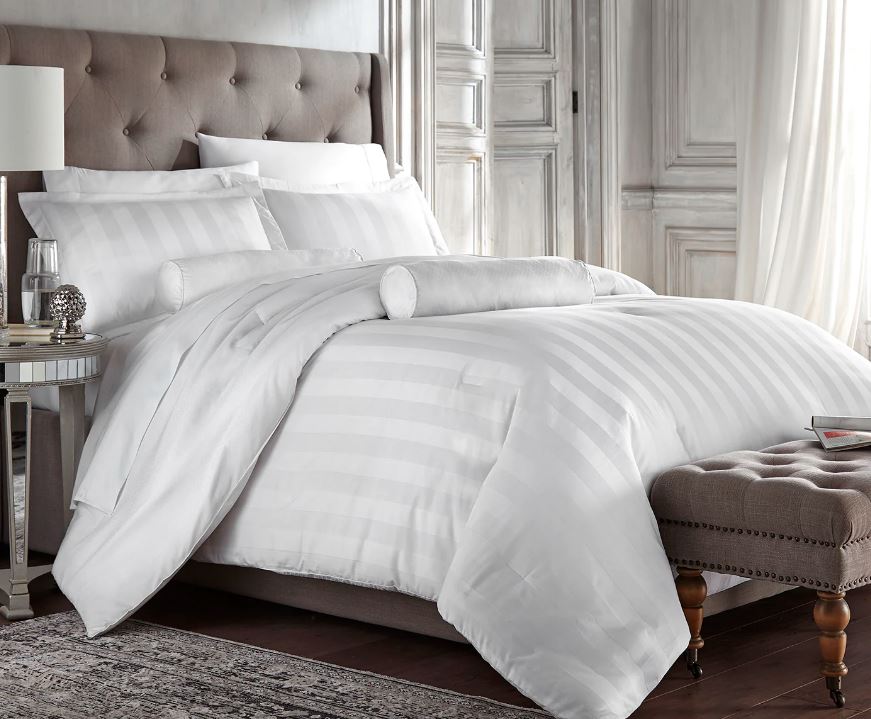
See if It’s Time to Toss Your Old Pillows

If you’re like most people, you rarely spend much time thinking about your bed pillow unless it’s extraordinarily uncomfortable. But that old pillow is what supports your head and neck and touches your face for around a third of your life, so it’s important to make sure it’s taking good care of you as you sleep.
You may have a favorite comfortable old pillow, but even great pillows have to be replaced at some point. Older pillows may begin to provide less support, or become worn or soiled, no longer providing you a healthy sleep environment. Read on for the three top reasons you’ll want to change your bed pillow more frequently than you might expect.
1 Dust Mites and Other Pests Move In

As you travel through life, you shed trillions of microscopic skin cells. Most of these cells leave your body while you’re awake and active and end up blowing away in the wind or washing down the sink or shower drain. But you’re also shedding these cells while you’re in bed. As your body releases heat and you sweat while sleeping, the moisture carries skin cells through your pillowcase and sheets and into your pillows and mattress.
These skin cells themselves aren’t harmful, even if the idea of them is a bit gross. But dust mites (which are essentially microscopic spiders) love to eat the fungi, bacteria, and proteins that coat each skin cell, and will quickly move into your pillows once they detect a steady supply of discarded skin cells. People with dust allergies, asthma, or other sinus issues may wake up with a stuffy nose, puffy eyes, and sinus pain from a night spent inhaling “Der p1,” a digestive byproduct dust mites leave behind. If your congestion seems to be worse in the morning but improves as the day goes on, it’s likely your pillow is to blame.
Fortunately, regularly washing your pillowcases and pillows and also replacing your pillows about twice a year (for inexpensive polyester kinds) or every one-and-a-half to two years (for high-quality memory foam, cotton, down, or down alternatives) will go a long way toward reducing dust mite accumulation and keeping your allergies at bay.
2 Saggy Pillows Lack Support

Your pillows go through a lot of abuse, even when they’re cared for and fluffed regularly. Over time, the pressure exerted by your head and shoulders will break down the support inside the pillow, especially if you tend to toss and turn. Once your pillow has gone flat or is too fluffed-out to provide much support, you may wake up with neck pain or stiffness or even have to wake up frequently in the middle of the night to re-adjust your position. If you’re waking up sleepy, but not sure why it could be your pillow.
Replacing your pillows regularly will ensure that you’re in the optimal position for sleeping, helping you stay asleep longer and wake up well-rested. You may want to experiment with different pillow sizes or firmnesses to see which you prefer, as there is no one “perfect” pillow type.
3 Sweat, Saliva, and Body Oils Can Clog Pores

Another great reason to focus on pillow hygiene (and regular pillow replacement) is staring you right in the mirror. Body oils shed from your face, scalp, and neck each night can slowly coat your pillowcase (and pillow) over time, increasing the risk of clogged pores and breakouts. Even if you aren’t prone to breakouts, the residue left behind on your pillow can leave your skin looking dull and dry. And if you don’t always remove your makeup before bed or if you drool in your sleep, this all gets absorbed into your pillow.
Some pillows can be laundered, but that’s not recommended too frequently as it may age the pillow faster or cause it to lose form, depending on the type of filling and the pillow structure. It’s best to replace your pillow within the guidelines above (6 months – 2 years) to assure you have a fresh pillow that is good for your skin.
Invest in a Quality Bed Pillow and Protect It Well

If you can’t remember the last time you bought a new bed pillow, or if learning about dust mites has you wanting to throw your current pillow out today, you’ll want to ensure you upgrade to a high-quality replacement. When it comes to pillows, the saying “you get what you pay for” holds true, and only purchasing the cheapest pillows you can find may leave you dissatisfied after just a couple of months.
Sobel offers a wide range of high quality bed pillows for different sleeping styles and firmness preferences. Designed for high-end hotels, Sobel’s pillows are made from top quality materials and are suited to any sleep style and budget. Sobel’s pillows hold their shape and firmness far longer than traditional low end “supermarket” polyester pillows. And, when you do buy that quality new pillow, extend its life and get a better night’s sleep with a pillow protector and a clean pillowcase.
Visit Sobel at Home for more advice on pillows and pillow care and take a look at our pillow collection when it’s time to replace your old pillow.




